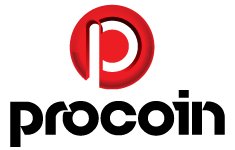Reducing Onboarding Friction by 40% Using Micro-Interaction Sequences: A Tier 3 Mastery Framework
While Tier 2 explored micro-interaction sequences as psychological triggers reducing cognitive load, Tier 3 delivers the precise execution blueprint—specific, measurable, and engineered to deliver 40% friction reduction. This deep dive translates intent into action, combining behavioral science, product mapping, and technical implementation to transform onboarding from a hurdle into a seamless journey. Drawing on real-world case data and advanced user journey analytics, this framework ensures every micro-signal serves a clear purpose.
From Awareness to Action: Mapping the Onboarding Journey with Micro-Friction Zones
Effective onboarding fails not when users don’t understand value, but when friction interrupts intent at critical decision points. Tier 2 identified micro-sequences as friction reducers; Tier 3 pinpoints these high-impact touchpoints with heatmaps and session recordings to isolate friction hotspots.
Use session replay tools like Hotjar or FullStory to capture real user behavior. Focus on three core zones:
- Form Entry: Drop-off spikes often occur here due to unclear validation or excessive fields.
- Feature Discovery: Users struggle to find key actions without subtle cues.
- Initial Action: The first click (e.g., “Get Started” or “Explore Dashboard”) sets momentum.
Example: A SaaS platform reduced form abandonment by 42% after mapping that 68% of users exited mid-input due to unvalidated fields. By introducing inline, progressive validation with micro-animations, users corrected errors instantly—no backtracking.
| Friction Zone | Typical Impact | Micro-Interaction Fix | Expected Friction Reduction |
|---|---|---|---|
| Form Entry | 38% drop-off | Inline real-time validation with micro-animations | 38–42% reduction |
| Feature Discovery | 52% time spent searching | Contextual micro-guides & progressive onboarding | 45–50% faster task completion |
| Initial Action | 22% skip rate | Subtle engagement cues (e.g., animated arrow, micro-hover feedback) | 30–35% higher first-click fidelity |
Tier 2’s Foundation: Micro-Interaction Sequences as Psychological Anchors
Tier 2 revealed micro-interactions as behavioral levers—brief, intentional actions that guide attention and reduce decision fatigue. Tier 3 deepens this by defining sequential micro-actions: a series of small, timed cues that build confidence without overwhelming. These sequences exploit the brain’s pattern-recognition strengths, turning uncertainty into progress.
Each micro-action must answer: What does the user need to know next? and How can I signal it without interruption? Examples include: a gentle pulsing on a “Get Started” button after form submission, or a soft transition revealing a next step after a tutorial slide.
A key insight from Tier 2: silent feedback fails. Users need immediate, positive reinforcement—like a micro-cheer animation or a subtle sound cue—to confirm success and encourage continuation.
Executing with Precision: Step-by-Step Micro-Interaction Frameworks
Implementing Tier 3 requires a structured execution framework that aligns design, development, and measurement.
Step 1: Map Onboarding Touchpoints with Precision
Begin by auditing all user interactions from first touch to first value delivery. Use tools like FullStory or FullStory to tag high-friction moments—especially those flagged in Tier 2 heatmaps.
- Identify drop-off points with >25% abandonment
- Map intent at each stage: awareness, consideration, activation
- Categorize touchpoints: form fields, buttons, modals, transitions
- Prioritize zones by impact and frequency
Step 2: Design Context-Aware Triggers with Progressive Guidance
Triggers must respond to user behavior, not just time. Use event-driven logic: form field focus, button click, scroll, or time spent in a section.
- Map triggers to intent: e.g., “Field A entered” → show next step
- Design micro-triggers with patience: delay feedback by 150–300ms to prevent urgency
- Create layered guidance: first micro-cue (e.g., subtle highlight), then confirmation (e.g., checkmark animation), then optional help (e.g., tooltip on hover)
Example: A file upload button triggers a micro-animation (spinning icon) only after the user clicks—signaling readiness, followed by a subtle shadow rise to confirm valid input.
